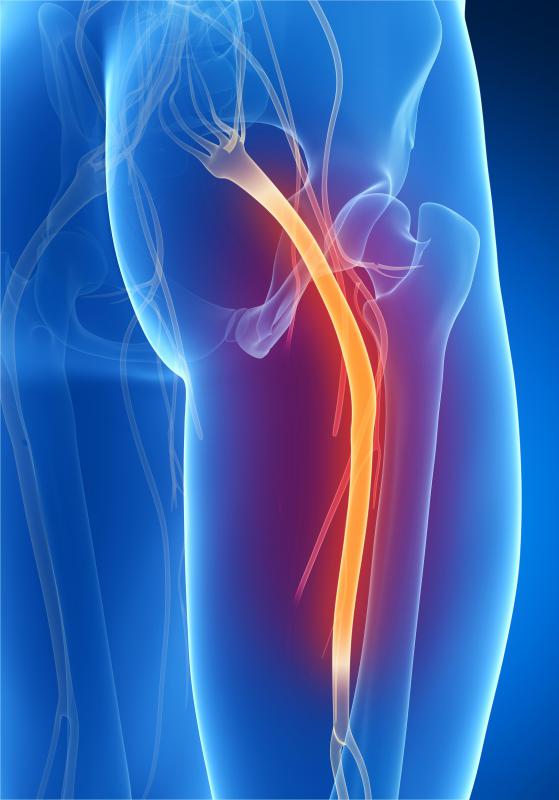At WiseGEEK, we're committed to delivering accurate, trustworthy information. Our expert-authored content is rigorously fact-checked and sourced from credible authorities. Discover how we uphold the highest standards in providing you with reliable knowledge.
What does the Peroneal Nerve Control?
The nerve responsible for supplying the lower leg with signals from the brain is the peroneal nerve. Branching out from the sciatic nerve the peroneal nerve is located in the back of the leg and wraps around the fibula or calf bone. Problems with this nerve can cause a decrease in sensations or movement of the lower leg and foot.
An important component of the peripheral nerve system, the peroneal nerve, also referred to as the common fibular nerve, is a communication link between the central nervous system consisting of the brain and spinal cord, and the lower leg. Stemming from four nerves of the central nervous system, the fourth and fifth lumbar nerves located in the low back and the first and second sacral nerves located in the pelvis area, this nerve allows electrical impulses to be translated into movement or sensations in the leg and foot. This is accomplished by dividing into two branches and innervating key muscles in the calf.

The peroneal nerve splits into a superficial and a deep section. The superficial branch supplies the peroneus longus and peroneus brevis muscles responsible for foot movements including dorsiflexion and plantarflexion, pointing toes up and down respectively, and eversion, or moving the foot sideways away from the body. The deep fibular nerve delivers messages to muscles such as the tibialis anterior and the extensor muscles of the foot. These muscles aid in movement of the ankle, foot and toes.

Problems with the peroneal nerve, also referred to as peripheral neuropathy, can occur with any injury to the lower leg including the knee or the calf. Nerve impingement or restriction may also result in changes or difficulties with leg and foot movement or sensations when there is an increased pressure applied to the lower leg or knee. This excessive strain on the fibular nerve can happen from poor positioning for prolonged time frames as seen with a decrease in general bed mobility or with habitual crossing of the legs.

Symptoms of peroneal nerve problems include a decrease or lack of sensation in the foot or lower leg accompanying a possible reduction in strength or movement of the foot or ankle. When foot and ankle movement is hampered, walking may become difficult as the ankle loses the ability to lift the toes as the leg swings forward, resulting in a condition called drop foot. Drop foot causes the toes to drag and increases the risk of a fall.
AS FEATURED ON:
AS FEATURED ON:

















Discuss this Article
Post your comments